Abstract
Integration of multiple information systems of a medical center will change the way physicians work and practice medicine in the future. Several major steps must be taken by an institution to make this a reality. Since 1983, Georgetown has been engaged in an Integrated Academic Information Management System (IAIMS) project to bring together multiple sources of information that reside on different computers and database systems. Georgetown is developing a Biotechnology and Biomedical Knowledge Network that includes informational and clinical databases, scholar workstations, instruction on computer use, a campuswide network with local area network nodes, and a modular approach to systems integration. The IAIMS project, spearheaded by the medical library, has enabled a broad spectrum of health professionals to benefit directly from new, dynamic information services. The network is heavily used; in 1991, more than 2,100 individual users conducted more than 148,500 computer functions and more than 104,000 searches. There is economy of scale in high-volume use. Overall, the average search cost is $1.57; for high use databases the cost is $0.38, and for low use, it is $9.41. As described in this paper, IAIMS offers a cost-effective means of enhancing patient care by improving information services to physicians. At Georgetown, IAIMS has advanced the concept of integration, accelerated use of computers in education, increased user acceptance of advanced technologies, and established cost factors for providing information resources. While progress made in improving the transfer of medical information is impressive, it is clear that IAIMS requires several more years of support to achieve full implementation.
Full text
PDF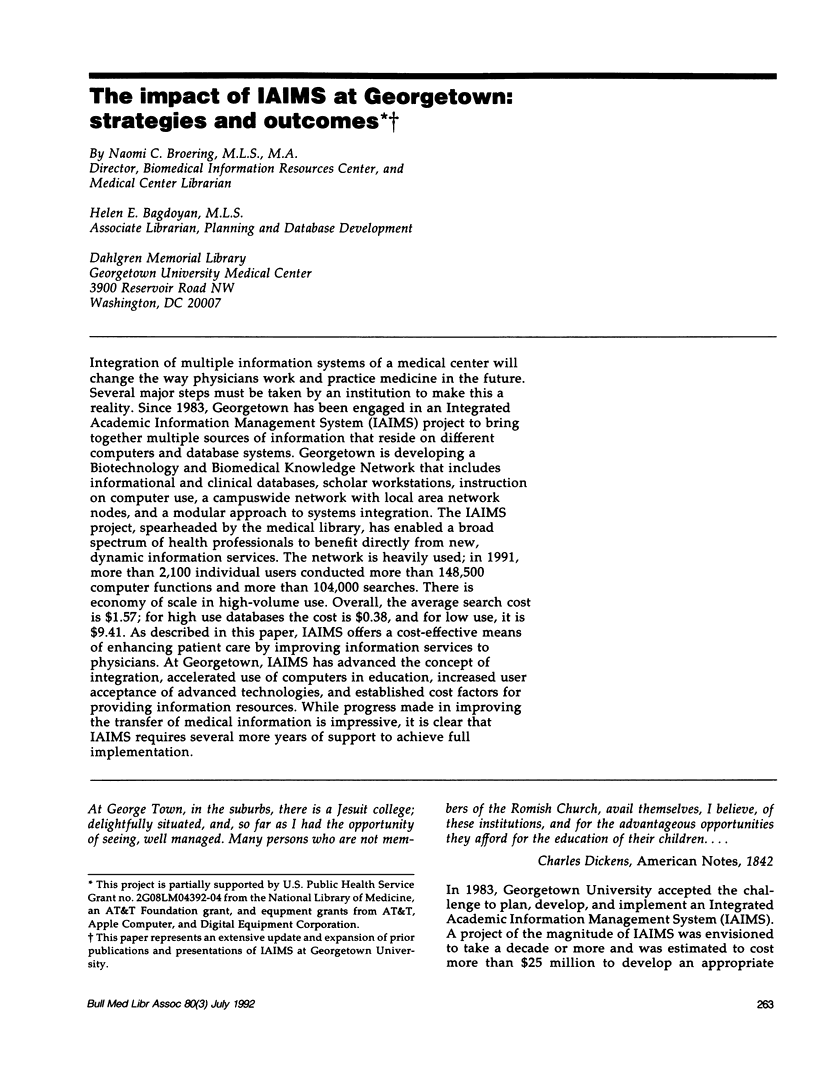

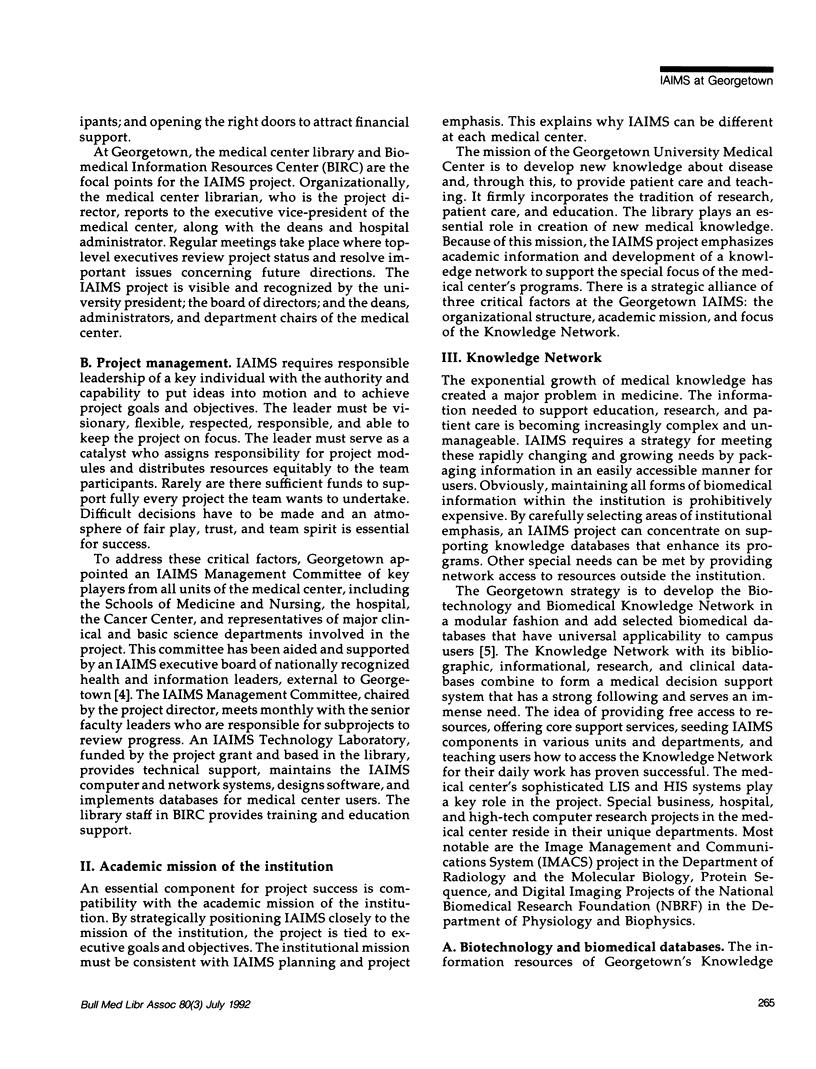

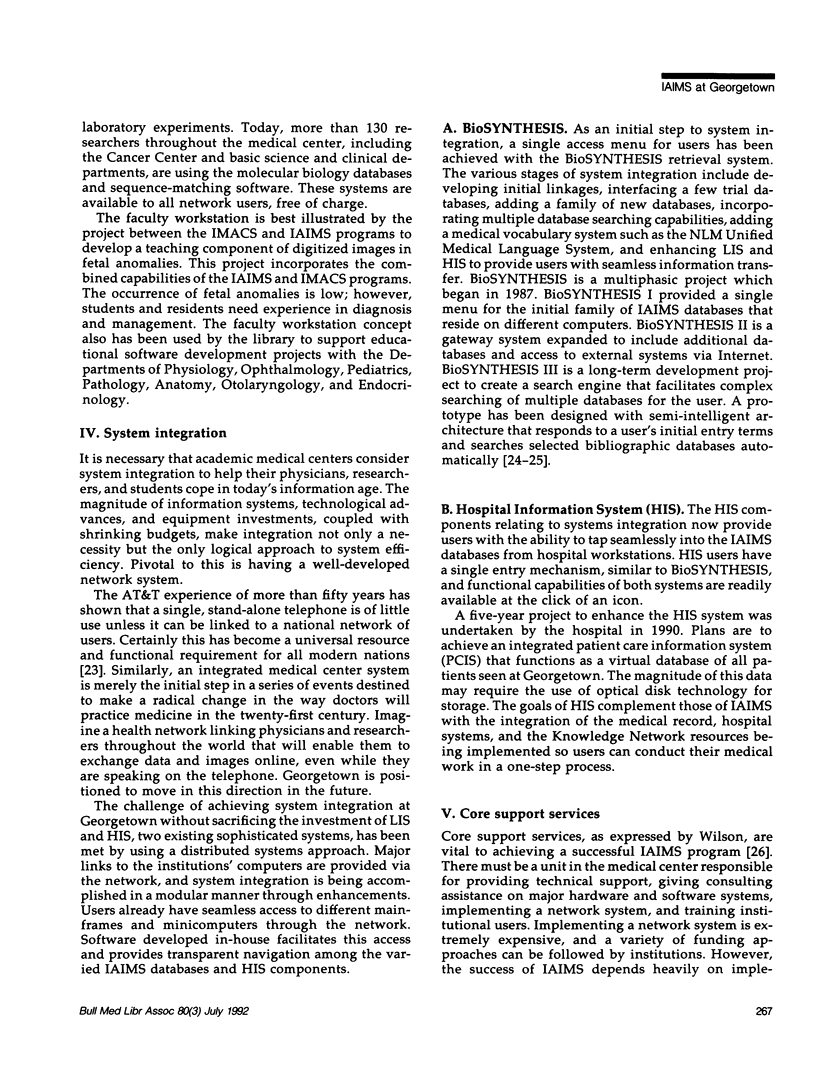
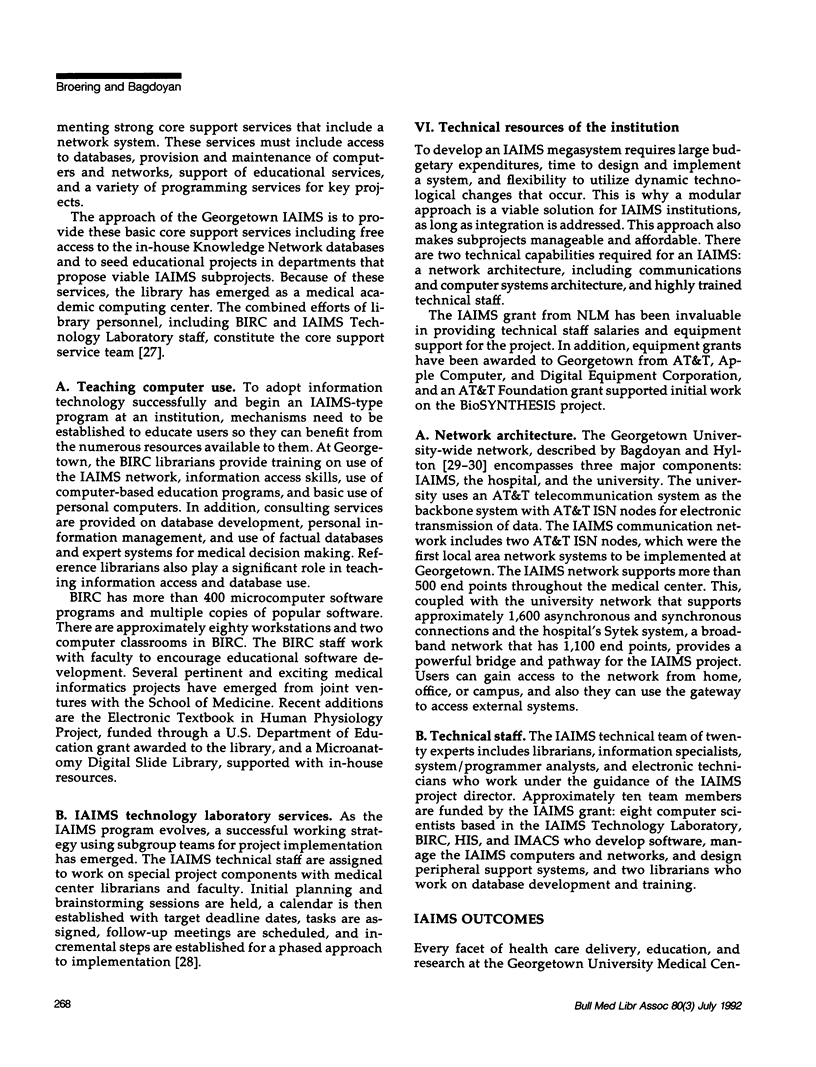

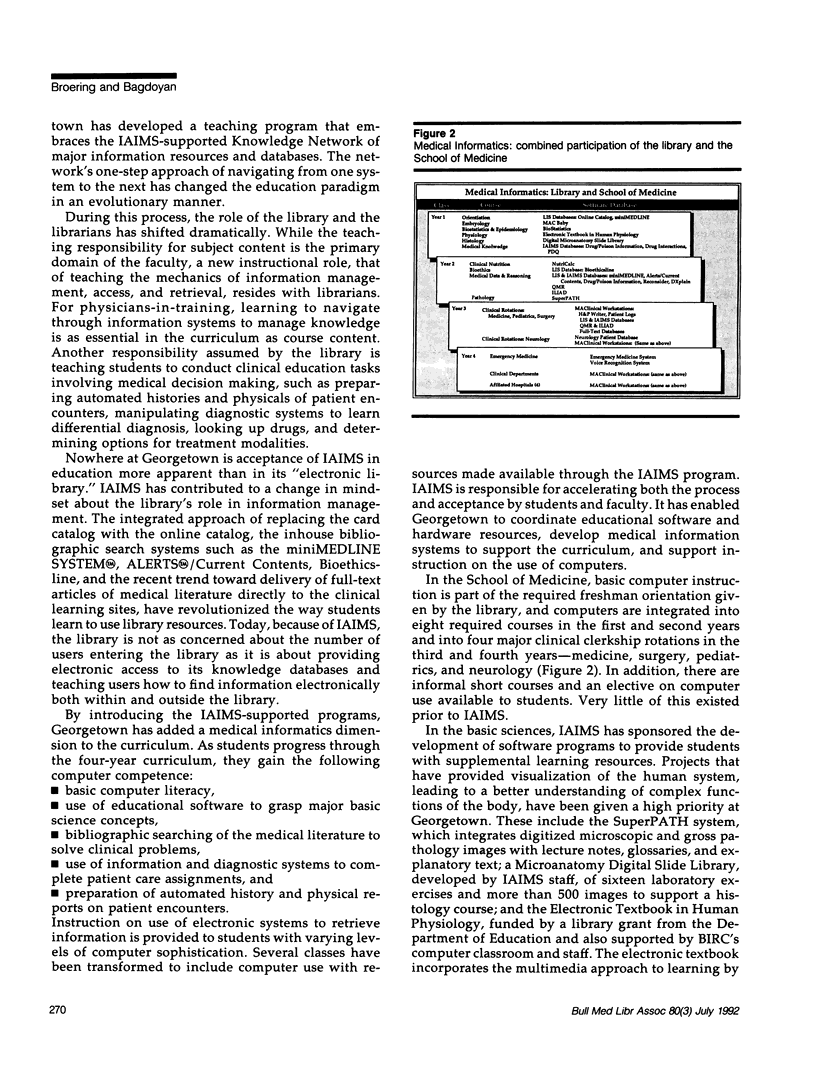
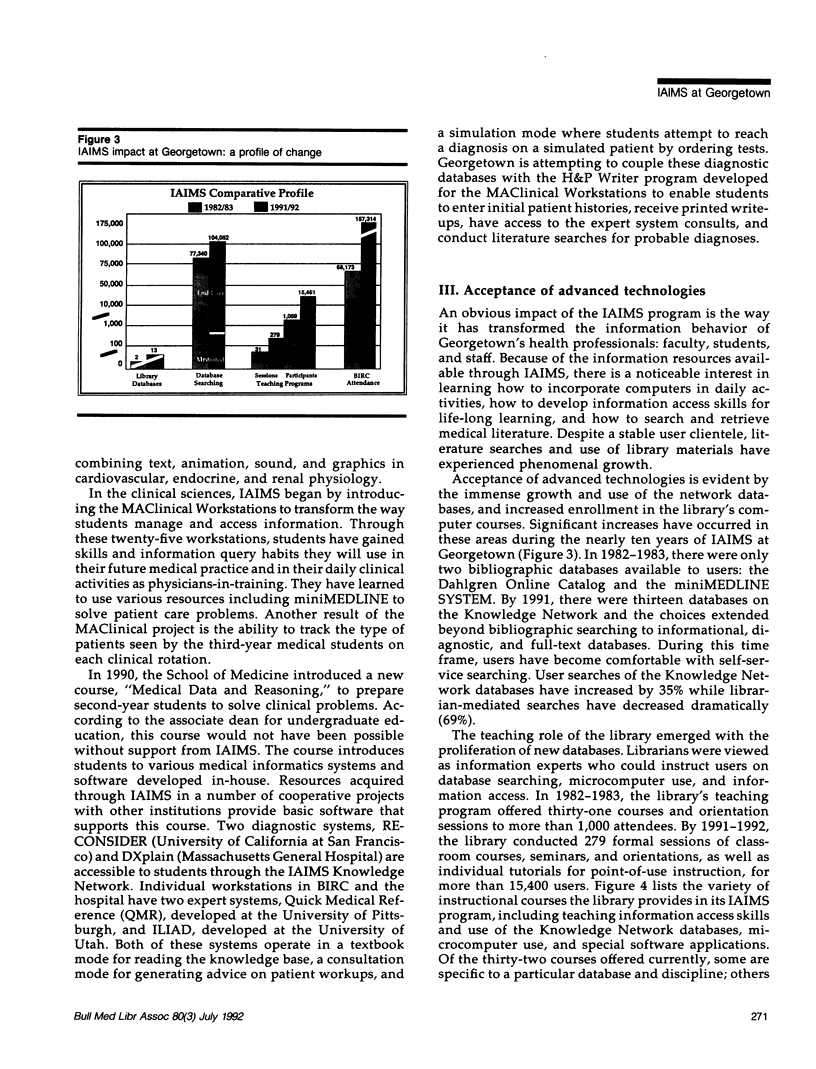
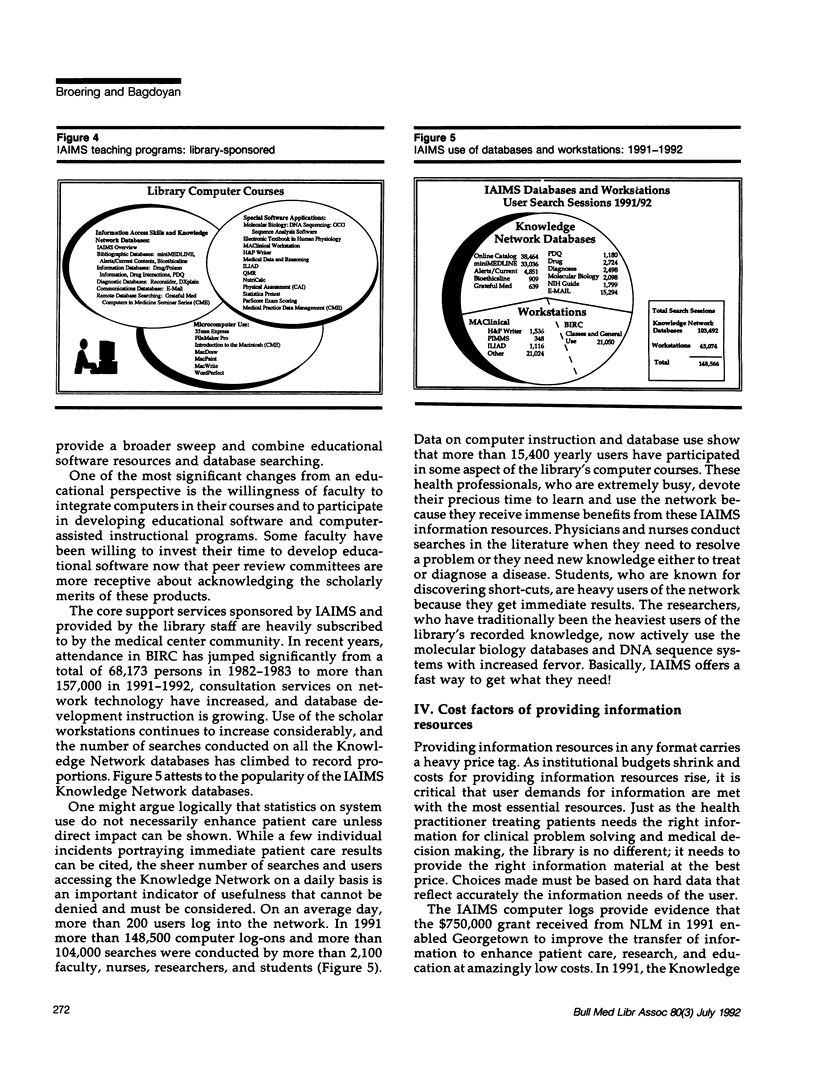

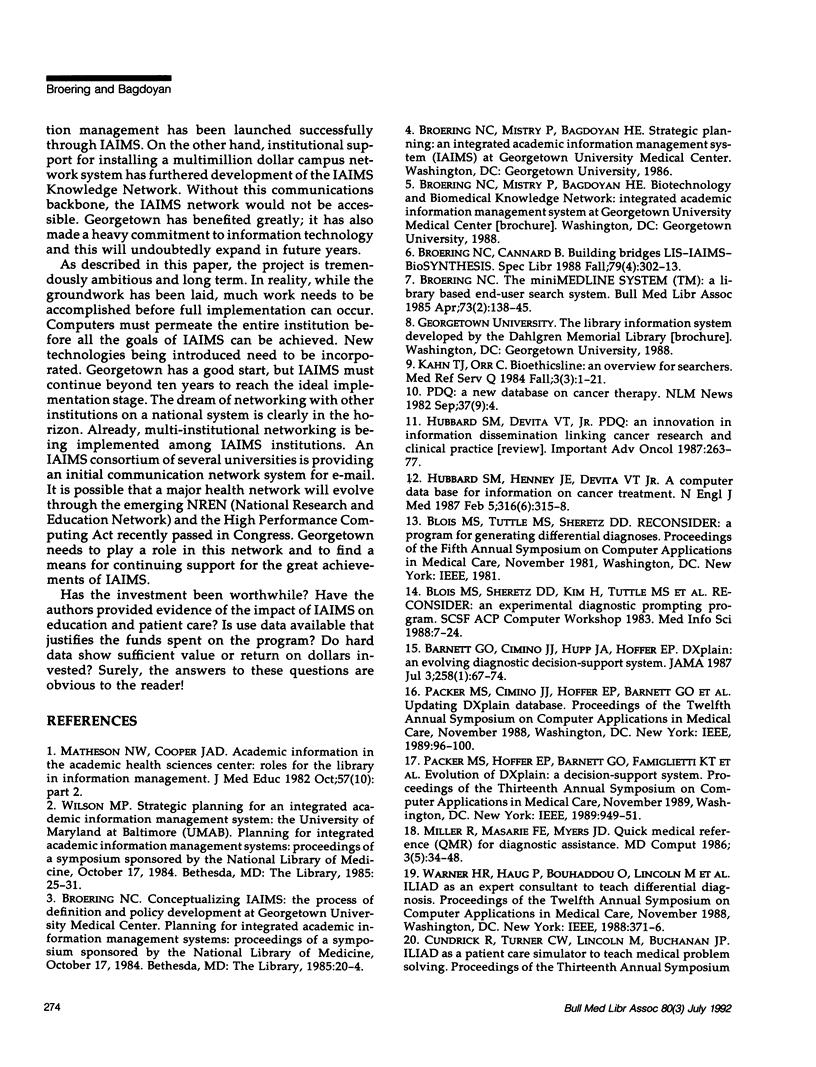
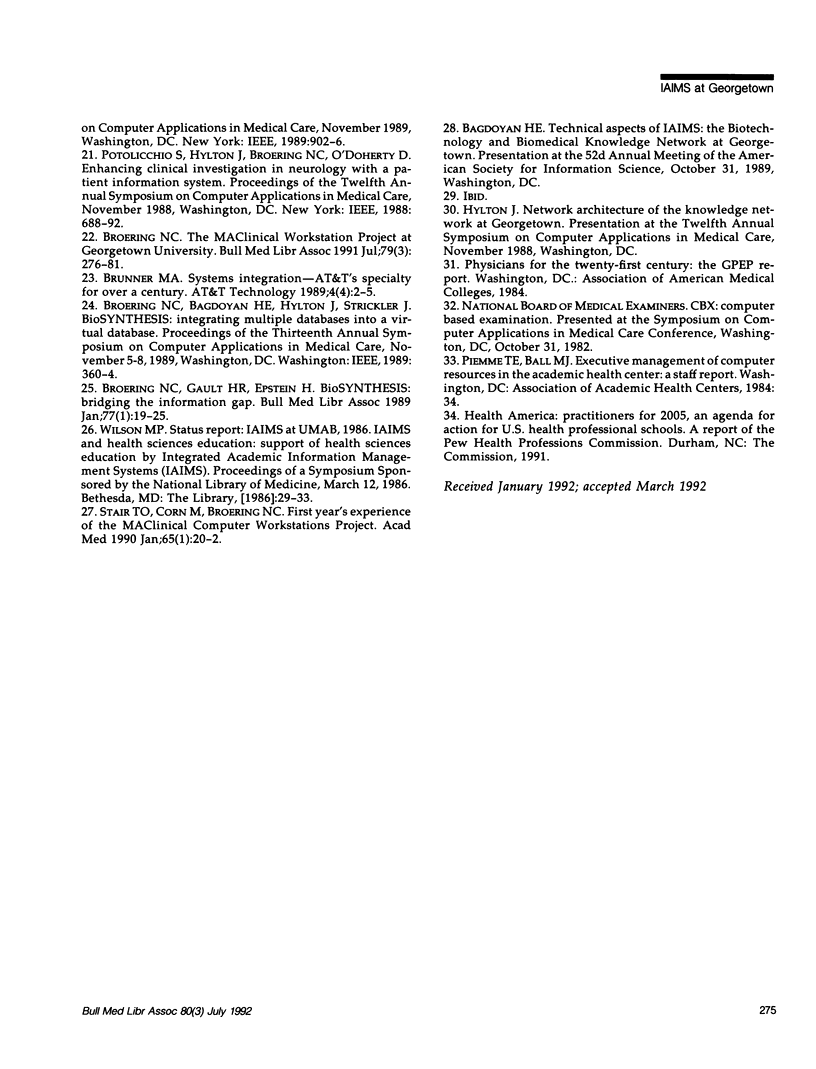
Selected References
These references are in PubMed. This may not be the complete list of references from this article.
- Barnett G. O., Cimino J. J., Hupp J. A., Hoffer E. P. DXplain. An evolving diagnostic decision-support system. JAMA. 1987 Jul 3;258(1):67–74. doi: 10.1001/jama.258.1.67. [DOI] [PubMed] [Google Scholar]
- Broering N. C., Cannard B. Building bridges: LIS-IAIMS-BioSYNTHESIS. Spec Libr. 1988 Fall;79(4):302–313. [PubMed] [Google Scholar]
- Broering N. C., Gault H. R., Epstein H. BioSYNTHESIS: bridging the information gap. Bull Med Libr Assoc. 1989 Jan;77(1):19–25. [PMC free article] [PubMed] [Google Scholar]
- Broering N. C. The MAClinical Workstation Project at Georgetown University. Bull Med Libr Assoc. 1991 Jul;79(3):276–281. [PMC free article] [PubMed] [Google Scholar]
- Broering N. C. The mini MEDLINE SYSTEM: a library-based end-user search system. Bull Med Libr Assoc. 1985 Apr;73(2):138–145. [PMC free article] [PubMed] [Google Scholar]
- Hubbard S. M., DeVita V. T., Jr PDQ: an innovation in information dissemination linking cancer research and clinical practice. Important Adv Oncol. 1987:263–277. [PubMed] [Google Scholar]
- Hubbard S. M., Henney J. E., DeVita V. T., Jr A computer data base for information on cancer treatment. N Engl J Med. 1987 Feb 5;316(6):315–318. doi: 10.1056/NEJM198702053160606. [DOI] [PubMed] [Google Scholar]
- Kahn T. J., Orr C. BIOETHICSLINE: an overview for searchers. Med Ref Serv Q. 1984 Fall;3(3):1–21. doi: 10.1300/J115v03n03_01. [DOI] [PubMed] [Google Scholar]
- Miller R., Masarie F. E., Myers J. D. Quick medical reference (QMR) for diagnostic assistance. MD Comput. 1986 Sep-Oct;3(5):34–48. [PubMed] [Google Scholar]
- Stair T. O., Corn M., Broering N. C. First year's experience of the MAClinical Computer Workstations Project. Acad Med. 1990 Jan;65(1):20–22. [PubMed] [Google Scholar]


